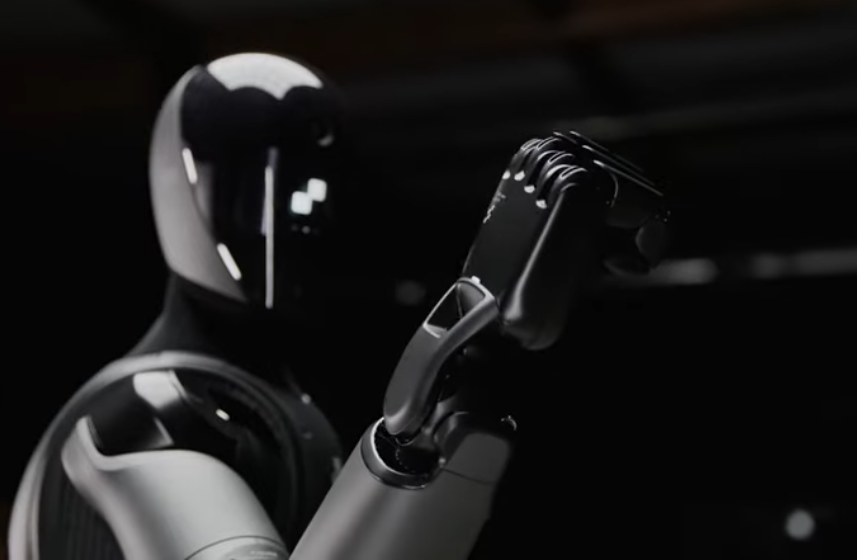- TECHSWU
- Posts
- TECHSWU #90
TECHSWU #90
Welcome to TECHSWU, your go-to destination for all things tech that matter in your daily life!



This article highlights the top 10 electric motorcycles that are ideal for city commuting. Electric motorcycles have become increasingly popular due to their agility, eco-friendliness, and cost-effectiveness.
The Ultraviolette F77 Mach 2 is one of the standout models, known for its excellent performance and unique design. Other notable models include the Husqvarna 401, Guerilla 450, RS457 (Aprilia), and Zero SR/F.
Factors to consider when choosing an electric motorcycle for urban commuting include performance and range, charging infrastructure, design and comfort, cost and maintenance, and connectivity and features. The future of electric motorcycles is promising, with trends such as extended range and faster charging, autonomous features, sustainable manufacturing, and enhanced connectivity.
By selecting an electric motorcycle, riders can contribute to a cleaner environment while enjoying the benefits of sustainable transportation.

In this article, a Microsoft employee shares his experience of realizing the negative impact of technology on children after becoming a parent. The father of four discusses his concerns about cyberbullying and catfishing and the steps he has taken to limit his children's screen time.
He admits that he struggles with his own addiction to technology but recognizes the importance of setting a good example for his children. The father uses apps like Aura and Screen Time to monitor and control his children's device usage, setting time limits and approving app downloads.
While his kids initially found the restrictions frustrating, they have since become more engaged in other activities and have even asked for more books to read. The father plans to continue monitoring their digital activity until they turn 18.
He also expresses his belief that social media companies should take more responsibility for the content they allow on their platforms.


Vandalia Health in West Virginia has become the first healthcare facility in the state to use the da Vinci 5 surgical robot. Surgeons at Charleston Area Medical Center's Plateau Medical Center performed the first surgeries using the advanced robotic system, which is designed for minimally invasive procedures in urology, gynecology, thoracic, and general surgeries.
The da Vinci 5 offers several key enhancements, including improved tissue force reduction, optimized vision, better ergonomics, and enhanced computing power. The surgeon remains in complete control of the robot, with their hand movements translated into precise movements of tiny instruments within the patient's body.
Vandalia Health's adoption of this new technology represents an investment in improving the quality of care for patients in the community.

Figure AI, a $2.6 billion robotics startup backed by Jeff Bezos, Nvidia, Microsoft, and OpenAI, has released its new humanoid robot, Figure 02.
The robot, which is designed to resemble a human, has human-scale hands with human-equivalent strength and the ability to pick up objects weighing up to 55 pounds. It also has advanced AI-driven sight and can speak with enhanced voice communication.
BMW tested the robot in its Spartanburg, South Carolina plant and found that it could accurately place sheet metal pieces in the right place. Based on the successful test, Figure AI and BMW are collaborating to find new applications for the robot in car production.
While the robot's capabilities are impressive, there are concerns about the potential impact on human jobs. However, Figure AI has emphasized that its goal is for humanoid robots to support human work and address labor shortages rather than replace humans altogether.

The article discusses the rise of mini PCs and their big impact on the tech world. In the past, computers were large and heavy, but now, mini PCs are reshaping the industry.
The article highlights Holoware's mini PCs and their impressive features, such as 12th Gen Intel processors, up to 32GB of RAM, and 2TB of NVMe SSD storage. These mini PCs are not only powerful but also energy-efficient, consuming as little as 30-60 watts of power.
They are particularly useful in the age of remote work, as they are small enough to be portable and powerful enough to handle various tasks. The article concludes by stating that the future of computing is small, and mini PCs are making a huge difference in the tech world by offering high performance in a compact package.

/cdn.vox-cdn.com/uploads/chorus_asset/file/25561921/Connect_IQ_hero_image.png)
Garmin has made some updates to its Connect IQ Store, including the ability to make purchases using Garmin Pay. The app store previously lacked an easy payment method, making it difficult to download apps that weren't free.
The store also had a limited selection of apps compared to competitors like Google Play and Apple's App Store. However, Garmin's latest update introduces new watchfaces from popular brands such as Disney, Marvel, Star Wars, Porsche, and TaylorMade.
Additionally, a new GoPro Camera Control app has been added, allowing users to control their GoPro camera from their Garmin watch. While Garmin's app store may still lag behind the competition, these updates demonstrate the company's efforts to improve and better compete in the smartwatch market.

Get ready for the future of technology with Google's latest innovations. Google is set to revolutionize the digital landscape with its groundbreaking products.
The new lineup includes the Pixel 9, Pixel 9 Pro, Pixel 9 Pro XL, and Pixel 9 Pro Premium, all powered by the state-of-the-art Tensor G4 chip and running on the Android 15 platform. Android 15 offers new features and a revamped user interface, while Google Assistant and GenAI push the boundaries of artificial intelligence.
Google is also venturing into wearable technology with the Pixel Watch 3 and Pixel Buds Pro 2. However, along with these advancements come challenges and controversies, such as data privacy and security concerns.
Despite the potential drawbacks, Google's innovations promise enhanced user experiences and innovative solutions. Stay informed about Google's technological progress to navigate the evolving tech landscape with insight and awareness.

In this article, the author explores the growing trend of AI-driven beauty treatments. They recount their experience receiving a manicure from Clockwork, a robot designed to provide quick and efficient minicures.
The author discusses their hesitation and then their surprise as the robot paints their nails with precision in a matter of seconds. They also highlight other AI-driven beauty treatments, such as LUUM lashes administered by a robot and personalized skincare recommendations from Proven Skincare.
The author raises the question of what is lost when we rely on AI for these treatments, reflecting on the lack of human connection and community that comes from visiting a traditional nail salon. Ultimately, the author concludes that AI beauty treatments may be convenient for those on the go, but they cannot replace the personal touch and sense of community found in traditional beauty experiences.


Andy Chang, the global head of marketing technology and engagement solutions at Electrolux Group, is transforming the consumer products experience through advanced marketing technology. Chang combines technology with a deep understanding of consumer behavior to create personalized and unmatched experiences.
His team uses machine learning algorithms to predict consumer patterns and adjust marketing strategies, boosting revenue growth and enhancing client loyalty. In 2023, a significant portion of Electrolux's total earnings in the region that adopted these technologies came from AI and machine learning-enhanced marketing operations.
Chang emphasizes the importance of transparency and ethical data use to maintain consumer trust and compliance with data privacy regulations. He also plays a significant role in shaping industry standards and promoting best practices through his advisory role and speaking engagements.
Overall, Chang's work highlights the transformative power of visionary leadership in the consumer goods sector and sets new industry standards.

Figure AI Inc. has unveiled its second-generation humanoid robot, Figure 02, which is a significant improvement over its predecessor, Figure 01.
The new robot, developed with the help of OpenAI, is more equipped for natural speech conversations and is designed to be sold to industrial companies. The Figure 02 features a sleek and durable design, with a matte black finish replacing the metal look of Figure 01.
It also has enhanced battery capacity, mobility, and interaction capabilities. The robot can now converse with humans through voice commands and has improved perception and object manipulation abilities.
The hand design has been carefully crafted to mimic the human anatomy with 16 degrees of freedom, enabling it to manipulate objects like a human hand. Figure AI has already deployed Figure 02 to a BMW plant to gather data for AI model training, marking a significant milestone in its development.

The iGB L!VE Startup LaunchPad 2024 recently took place in Amsterdam, showcasing the innovation and future technology in the iGaming industry. The event included five startup pitches, with each company given 12 minutes to present their ideas to a panel of judges.
Several startups highlighted the use of blockchain and artificial intelligence (AI) in their presentations. For example, Match Hype discussed its advanced AI technology for analyzing sporting events, while Swap Profit mentioned the use of smart contracts on the blockchain for guaranteeing payouts and storing user data securely.
Lucky Lady Games presented interactive innovations such as AI-powered NPCs and non-fungible tokens (NFTs). Match Hype emerged as the winner of the Startup LaunchPad, taking home a prize of €6,000 ($6,546).
The organizers have announced that next year's event will be even bigger and better. The iGB L!VE conference will also be moving to London in 2025, offering further opportunities for showcasing the latest advancements in the iGaming industry.

The Los Angeles Times article explores the impact of artificial intelligence (AI) on farm jobs and the quality of our food. While robots using AI in agriculture can reduce herbicide usage, eliminate weeds efficiently, and pick crops faster, the author argues that this "new era of industrialized food production" has resulted in bland-tasting produce with reduced nutritional value.
Industrial-scale farms prioritize crops that can be harvested quickly, packed densely, and transported over long distances, sacrificing taste and nutrition in the process. The adoption of AI in farming may further compromise the taste and quality of future crops.
Additionally, although AI technology may eliminate low-paying farm jobs, the costs associated with implementing this technology may not result in lower food costs for consumers. The article presents different perspectives on the impact of AI in agriculture, highlighting the potential drawbacks of widespread adoption.

New York City is using drones with loudspeakers to warn residents of potential flooding in vulnerable areas. The initiative comes in response to increasing weather-related threats, particularly in basement apartments.
The drones are equipped with loudspeakers and broadcast warnings to residents about the threat of heavy rainfall. The warnings are given in multiple languages and are part of a larger strategy that includes social media alerts and text notifications.
The goal is to prioritize safety and preparedness during severe rainstorms, which have proven to be deadly, especially for those living in basement apartments. The use of drones is a new approach to emergency communication in the city and reflects Mayor Eric Adams' commitment to incorporating technology into city management.

From early pedometers strapped to your waist to the sophisticated smartwatches and rings we have today, the evolution of wearable tech has been remarkable. Pedometers and portable heart rate monitors gained popularity in the 1970s and 1980s with the growth of the fitness industry.
In the early 2000s, we saw the first wrist-worn fitness trackers from companies like Fitbit, Jawbone, Nike, and Pebble. These trackers featured accelerometers, heart rate monitors, GPS, and SPO2 sensors, and could sync data to smartphone apps.
However, the popularity of fitness trackers has waned in recent years, with smartwatches taking the spotlight. Smartwatches offer additional features like phone notifications, music storage/control, and voice assistance, as well as advanced health measurements.
Smart rings have also emerged as discreet health monitoring devices. Looking to the future, fitness technology will focus on advanced biometric health data monitoring and AI-powered personalized workouts, sleep tracking, and stress management.
Overall, wearable tech has come a long way and holds promise for promoting an active lifestyle and monitoring vital health data.

